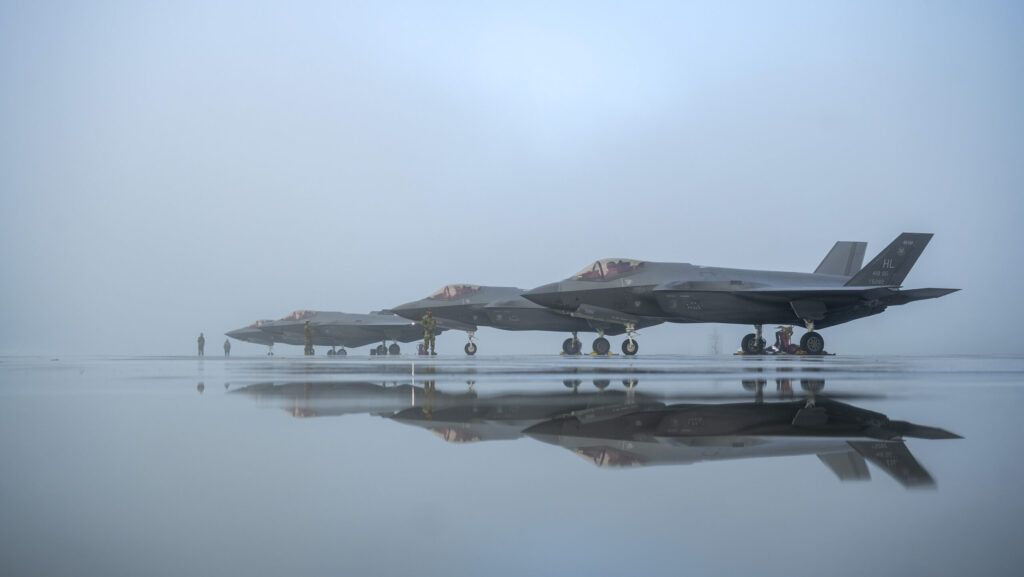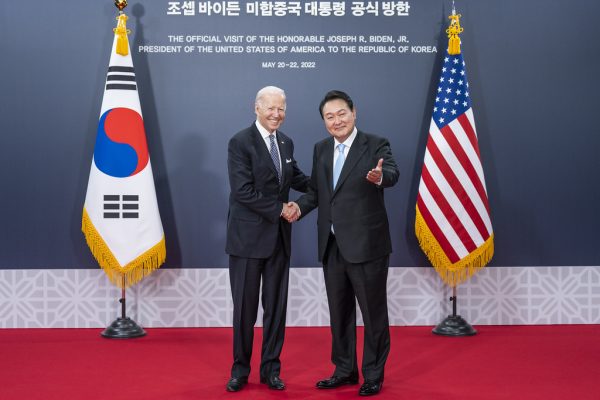Amid global focus on how a second Trump term might navigate U.S.-China relations, China has made a bold statement by unveiling an array of high-tech weaponry.
As the U.S. president-elect, Trump, prepares to return to the White House, with potential new turbulence in U.S.-China relations, a fresh lineup of Chinese “heavy hitters” is showcased at the soon-to-open Zhuhai Airshow, highlighting China’s rapidly advancing military capabilities.

The biennial Zhuhai Airshow has long provided a key window into China’s military technology advancements. Given today’s volatile international climate, China aims to use this year’s event to showcase its strength and send a message to potential adversaries, especially the U.S.
Although the much-anticipated H-20 stealth strategic bomber may not make an appearance, high-tech equipment on display, including fifth-generation stealth fighters, missiles, unmanned combat platforms, and high-power microwave weapons, is sure to captivate military enthusiasts.
The show gathers three out of the world’s five fifth-generation stealth fighters: China’s J-20 and J-35, and Russia’s Su-57. The debuting J-35, China’s second fifth-generation stealth fighter, was designed as a counterpart to the U.S. F-35.

The J-35, derived from the FC-31 “Falcon Hawk” introduced in 2012, has finally entered service with the Chinese Air Force after 12 years. Some Chinese military experts believe that the J-35 surpasses the F-35 in terms of engine power, stealth capability, radar detection range, and missile range.
The F-35 is powered by a single-engine with a thrust of 19 tons, which is exceptional; the J-35, however, uses two Chinese-made WS-19 engines, each with a thrust of 10.5 tons, providing a combined thrust that surpasses the F-35. The twin engines offer greater power, agility, and stability.
In terms of stealth, it’s reported that the radar cross-section of the J-35 is only 0.01 square meters, while the F-35 has a radar cross-section of 0.1 square meters, a tenfold difference. However, some experts caution that these figures lack reliable sources.
Radar-wise, the J-35 is equipped with an advanced gallium nitride active phased array radar, with a maximum detection range exceeding 200 km, outperforming the F-35’s 160 km. The J-35A is armed with PL-15 missiles, boasting a range of up to 200 km, surpassing the latest AIM-120 missile used by the U.S. at 160 km.
Of course, the F-35’s 12-year operational experience and advanced combat software currently give it an edge over the J-35. Additionally, the F-35 has nearly 1,000 orders, while the J-35 has just been introduced to the Chinese Air Force, indicating a long road ahead in terms of production and combat experience.
Another star weapon, the new generation HQ-19 surface-to-air missile system, is designed for regional interception of ballistic missile targets. It offers broad coverage for combat protection and strong defense capabilities against various missile threats, including hypersonic glide vehicles. Chinese military scholars claim the HQ-19’s interception capability for hypersonic glide vehicles is globally unique.

Another highlight for Chinese military enthusiasts, the “Jiutian” armed reconnaissance UAV, also made its debut at the Zhuhai Airshow. According to official data, the UAV’s maximum takeoff weight is 10 tons, with a maximum payload of 6 tons, making it the largest and heaviest armed reconnaissance UAV unveiled in China to date.
The “Jiutian” UAV has eight mounting points beneath its wings, including four inner points that can carry large anti-ship and ground-attack cruise missiles. These munitions, each weighing over 800 kg, were previously only carried by manned fighters, attack aircraft, and bombers. The UAV represents a breakthrough in the history of unmanned aerial development.
The “Jiutian” UAV’s mid-section also features a massive mission bay, with “Heterogeneous Hive Mission Bay” labeled in both Chinese and English, suggesting it might be a mother UAV capable of carrying and deploying numerous smaller UAVs and loitering munitions. The U.S. has proposed using the P-8 anti-submarine patrol aircraft to launch smaller UAVs and loitering munitions, but this concept has not been realized. Chinese military scholars believe the “Jiutian” is even more powerful than the J-35.

Aviation expert Wang Yanan noted that the PLA could use the “Jiutian” UAV to turn the eastern Philippine Sea around Taiwan into an “unmanned hell,” with its operational range potentially reaching Guam. “The U.S. military’s reliance on the first island chain to counter the PLA? We have enough loitering munitions to hover over the U.S. military 24/7. This leaves the U.S. military in an awkward position as it sees its own plans backfire.”
China’s high-power microwave weapon also appeared at the Zhuhai Airshow. Military scholar Meng Yan explained that this high-power microwave weapon can emit a wide electromagnetic pulse instantly, causing hundreds of drones to “crash” simultaneously, significantly enhancing interception efficiency. Given the growing threat of drones, this weapon demonstrates strategic value that surpasses even the HQ-19, signaling to the U.S. that it may be falling behind China.
This year’s Zhuhai Airshow hasn’t even officially opened, yet it has already stirred considerable excitement. As Trump’s second term brings new questions about the future of U.S.-China relations, China is making its stance clear by displaying advanced weaponry. Notably, the show doesn’t encompass all of China’s strategic deterrents, as more potent weapons, such as new intercontinental ballistic missiles and strategic nuclear submarines, will not be present.
Through the Zhuhai Airshow, China aims not only to showcase its military technological prowess but also to attract foreign buyers, generating funding for its defense industry and expanding its global influence. Source: Lianhe Zaobao




















Discussion about this post